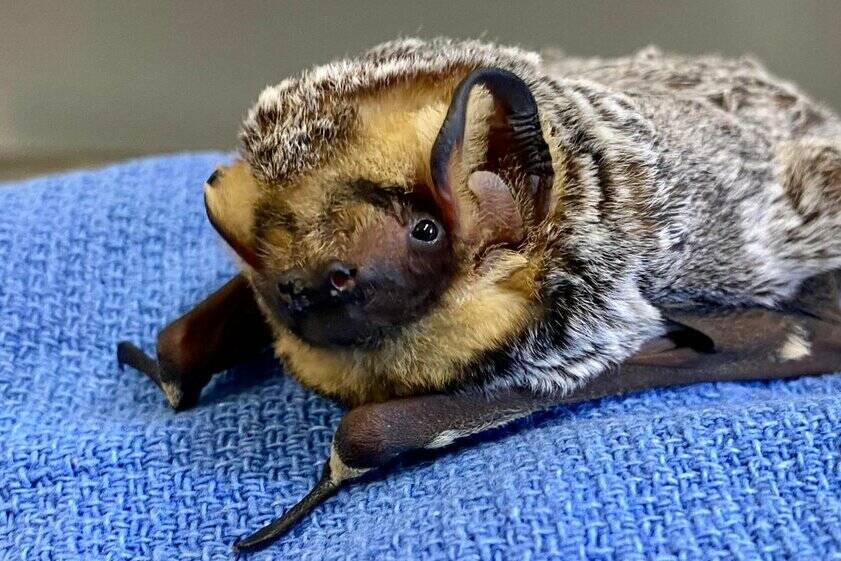A species of bats could have their numbers cut in half by 2028 if they’re not protected immediately, says a bat expert.
Dr. Cori Lausen comment comes after the Commitee on the Status of Endangered Wildlife in Canada released a an assessment May 10 regarding three species of bats: the eastern red, hoary and silver-haired.All three bat species have declined dramatically in recent years and the committee assessed each of them as “endangered.”
The three species fly at night and don’t roost in large groups, making them elusive. They’ve faced both habitat and food losses because their roosting trees have been logged and their prey – insects – reduced by pesticides.
In addition, the COSEWIC assessment also notes that wind turbines pose a “substantial threat” on the bats’ migratory flights south in the fall, with hundreds of thousands estimated to be killed this way every year.
“Mitigation works. Turning wind turbines off for very short periods at low wind speeds during the fall season can reduce mortality by 50-80%, while minimally compromising energy generation,” notes Stephen Petersen, co-chair of COSEWIC’s terrestrial mammals subcommittee.
Meanwhile, Lausen said the assessment wasn’t surprising. Lausen is the director of the Wildlife Conservation Society Canada’s Western Bat Conservation Program, and she’s been doing research into bat populations for 17 years.
Bats, however, are regulated at the provincial level, so Lausen’s hope province’s will see this assessment as a wake-up call.
“They need to also list these species in each province as endangered, and that then will force the wind energy industry to be regulated because these are species at risk then and this will force the provinces then to hopefully regulate the wind industry enough that we can substantially reduce the mortality of these bats.”
She said the hoary bats have been assessed twice now, and both times the results were “dire.” If nothing it done, their populations could be cut in half by 2028.
But despite the assessment, Lausen said the main takeaway is there are solutions.
So often, these animals will get listed as species at risk, but then it’s a wicked problem, how do we help these species? That’s not the case.”
In B.C. bats represent 12 per cent of all mammal species, and they’re a huge part of the province’s biodiversity. But all bats are facing some sort of major threat.
“It’s not looking good for bats.”
Declines in bat populations will ultimately have an impact on both the economy and the ecosystem, she noted. Bats are important for insect consumption, and with declining populations it could lead to ramifications including increased pesticide use.
“It’s a little bit of a vicious cycle in a way because if we don’t have enough bats eating the insects, then we’re going to have to use more pesticides and if we use more pesticides, that’s actually really bad for bats. It’s not great for humans, but it’s really bad for wildlife.”
@laurenpcollins1
lauren.collins@blackpress.ca
Like us on Facebook and follow us on Twitter.

